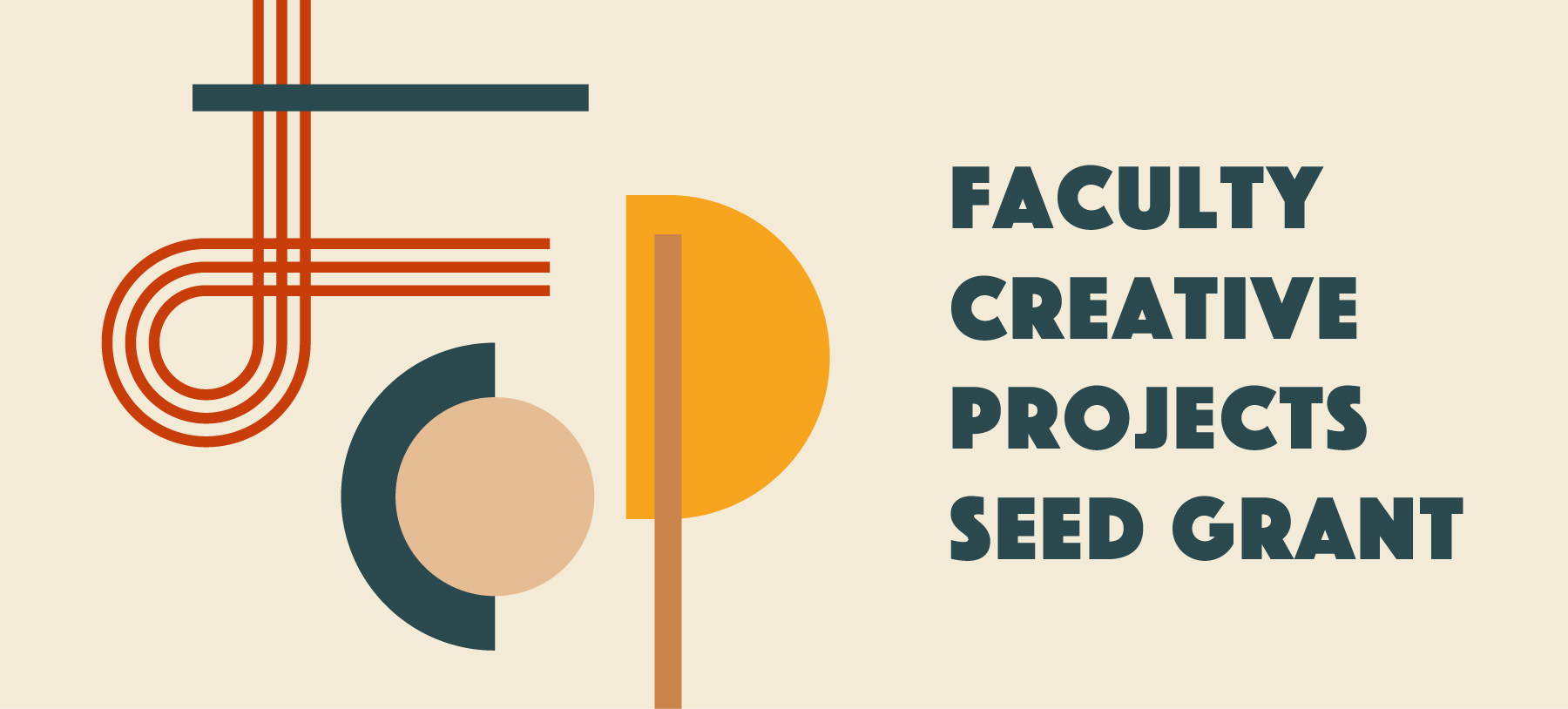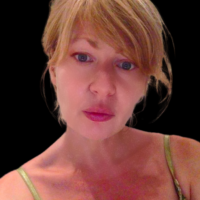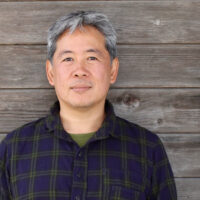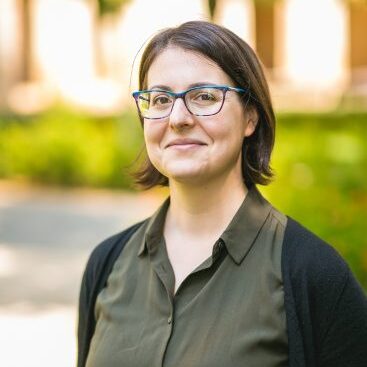
Faculty Creative Project Seed Grant
The Faculty Creative Project Seed Grant offers support for faculty creative projects with significant impact on campus and beyond.
Applications Closed for the 2024-26 Cycle.
2023-25

Patricia Alessandrini, Sonic Cyberfeminisms
This funding will support the première of a theatrical, intermedial “duodrama” for the coloratura virtuosi Marisol Montalvo and Donatienne Michel-Dansac and an ensemble of ten musicians, based on a libretto by author Alexandra Kleeman. This work will use “soft” robotics systems with both musical and visual interest, based on my previous work on the Piano Machine, Harp Fingers, Orpheus Machines and other physical computing systems. These interactive soft robotics systems will be developed in close collaboration with Marisol, Donatienne and Alexandra, in keeping with the feminist-futurist theme of an interplanetary dialogue between two women, necessarily mediated by technology. These ideas are a continuation of Parlour Sounds (2017), also for soprano and ten musicians, in which the household labor of a woman in the 1960’s was transformed into a musical performance by creating interactive instruments from vintage housekeeping appliances. It will thus create a pair of works to be performed separately or together, each with a duration of ca. 40 minutes. These works showing women transgressively repurposing the technology in these lived spaces take place in the past and future respectively, in a living room on the one hand and a space station on the other. While seemingly a somewhat playful subject, the issue at the core of this second theatrical work is how future technology – including robotics – might be imagined from a marginalized, specifically female perspective. Both are informed by feminist and cyberfeminist theory from Donna Haraway, bell hooks, Audre Lorde, Judy Wacjman and others.

Terry Berlier, Tonic Immobility
This project reimagines Louis Agassiz as an inverted shark being tagged through tonic immobility. By taming Agassiz, as he once fell from the quad in the 1906 earthquake with his “head in the sand”, I want to recenter queer, trans, and decolonial ways of healing to bring to the surface new ways to connect through interdependence. I will create a new series of sculptures, installations, and performances that traverse the intersections of queerness, ecology, memory, monuments, and archives based on this history. The project uses this object/statue as a starting point to perform an exorcism to remove its racist history. Drawing from scholars Sara Ahmed, Joan Roughgarden, Rachel Carson, Karen Barad, José Esteban Muñoz's and the University Archeologist, to decolonize and conjure new forms of place making.

Hideo Mabuchi, SilkPunk Memory Dōgu
In a recent Stanford lecture, author Ken Liu expressed sharp concerns about Western modernity as an alien cultural overlay, promulgated via techno-capitalism, that decoheres life experiences of peoples around the globe. As a form of creative resistance Liu advocates the exercise of a “technology and literary aesthetic” he calls Silkpunk, which “meld[s] past-reinterpretation with future-hopecrafting” to envision alternative modernities that might have evolved elsewhere, given more time in peace. In the work of Liu and like-minded writers, Silkpunk is science fiction that reregisters what we presume technology can do across the diversity of magical fantasies global humanity once had. Silkpunk imagines powerful and effective tools peculiar to indigenous cultures, and in so doing helps us feel the contingency and obtrusion of our actual technological regime. My project now asks: Must Silkpunk be fictional, and can nonfiction Silkpunk still be art? My aim will be to silkpunk computer technology by creating resistive digital memory (RRAM) devices (dōgu) based on the memristor effect in natural indigo, which take the form of traditional East Asian textiles and are fashioned primarily via corresponding craft processes. In Japanese, dōgu signifies tools meant for delimited use within traditional practices such as tea ceremony, suggesting that RRAM textile dōgu could be understood as implements for rituals of memory. My project will encompass historical research on Japanese-Korean cultural interactions and harms enacted by Japan upon Korean people, to inform the development of testaments or speculative historical fictions suitable for implanting in East-Asian-Silkpunk memory ritual textiles.

Jamie Meltzer, Shifted Landscapes
Shifted Landscapes is an observational feature documentary examining the pervasive effects that climate change has had on the environmental, cultural and psychological landscapes of California. The film explores the insidious ways that the state’s fragile ecosystems are currently being affected by climate change, and how these changes impact the lives of communities within the state.

Michael Rau, Orchestra Orpheus Opus Onus
Orchestra Orpheus Opus Onus is a new music-theater piece written by Kate Soper, and directed by Michael Rau. The piece is a hybrid of orchestral music, solo voice and theatrical spoken storytelling, mixed media and tape. Set in an post-apocalyptic future, Orpheus sifts through the past, confounded by the descent of music into orchestral memes, trying not to think about Eurydice.This new project will generate an original script, a new musical score, and preliminary stagings, and rough scenic, lighting and costume designs. The piece will be workshopped both in New York City and Stanford, will an eventual premiere in 2025.

Contact:
Sabrina Wilensky (she/her)
Director of Program Operations and Project Management
Office of the Vice President for the Arts
swilensk@stanford.edu

